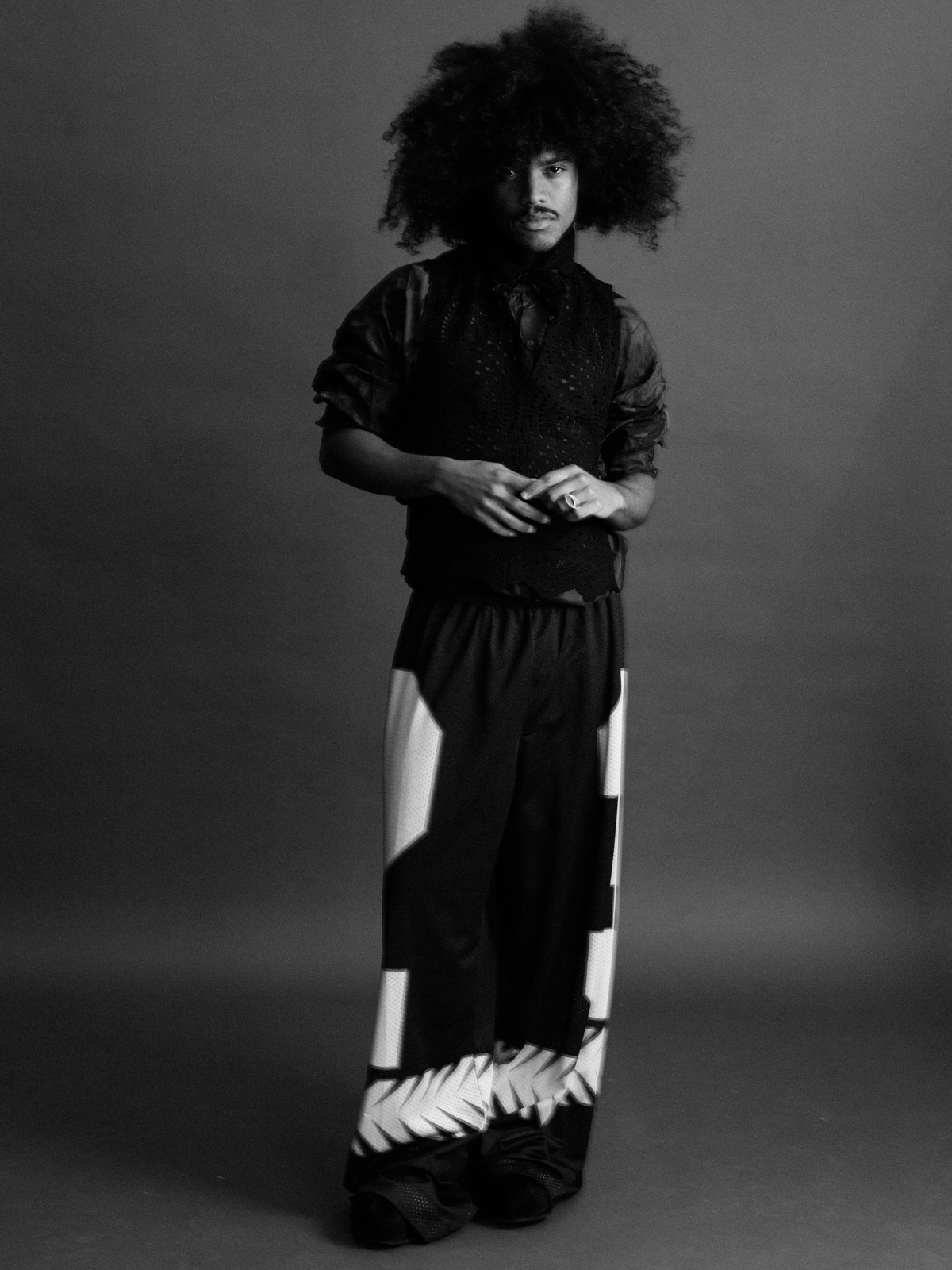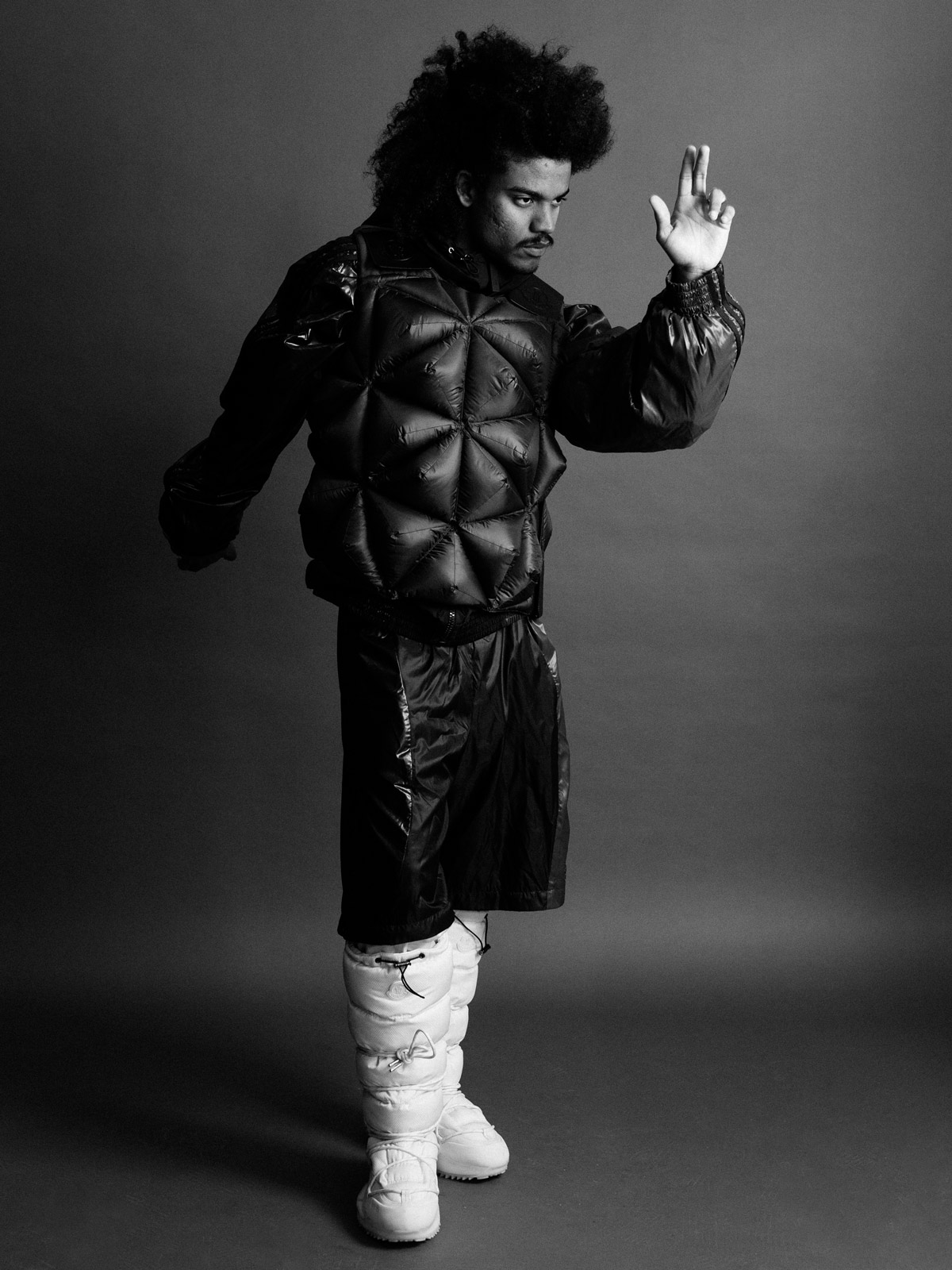
The Brazilian painter discusses what’s on the horizon following his recent exhibition at London’s Saatchi Gallery
When Samuel de Saboia’s paintings were first shown in New York as part of a group show for up-and-coming artists, that classification was apt: He hailed from Recife, Brazil and was just 17 years old. He had spent much of his adolescence in São Paulo, hocking cardboard paintings on Tumblr for $35 apiece. This American debut would open doors to a broader art market, and de Saboia was inspired to pack his bags and head to Europe, bouncing between Paris and Berlin as he established a style that combined vibrant, large-scale canvases with subjects that drew on his ideas of spiritualism and philosophy of art—a word that he understands as an acronym for amor, reve, temps: love, dream, and time.
De Saboia is now 26—settled in London and a known force in the art world. His work was recently on view at Saatchi Gallery in a group exhibition called Filling in the Pieces in Black, curated by June Sarpong. The series featured work of artists connected to the African diaspora, seeking to “redefine the past, refocus the present and reshape the future.” As the November exhibition drew to a close, de Saboia caught up with Document to discuss, among other things, what he’s been reading, what it’s like to share gallery space with his artistic heroes, and what to expect from his practice moving forward.
“Visions lead to movement, movement leads to chaos, chaos leads to texture, texture leads to color, color leads to harmony, harmony takes me home.”
Maximilian Tapogna: What pieces of yours are included in Filling in the Pieces In Black?
Samuel de Saboia: I have four paintings in the exhibit: Why did you separate me from the Earth, The Magician, Oxotocanxoxo, and We all hear you Child. They are part of a series where I explore worshiping, celebration, and self-discovery.
Max: Tell us about the journey behind this exhibition. Were you familiar with any of the other featured artists?
Samuel: I was familiar with some of them, especially Lyle Ashton Harris; I have been into his work since [my] teenage years. I also loved the work of Zak Ové, Sheena Rose, and Mickalene Thomas.
Max: The exhibition centers on the African diaspora and responds to the lingering ramifications of colonialism and slavery. How do these themes, as well as your identity and heritage, inform your work?
Samuel: The paintings in question are postcards of where I am mentally, physically, and spiritually, moving into an existence that both embraces and proposes an experience [beyond labels]. Indigenous, queer, Black, Brazilian, and man are words that format a guideline, which touches upon unnamed areas of feelings.
Max: You’ve moved quite a bit in the past few years. What drew you to this nomadic lifestyle?
Samuel: Part of it came from me living in the same place for 17 years. My family was into routine and doing the same things in the same places. That made me quite observant, spotting something different on the same landscape until it became new. I’ve tried sitting still, but my bed moves itself.
Max: Where are you currently based, and how are you finding it?
Samuel: Right now I’m in a bedroom at Soho House in London. I have a sweet relationship with this city, which I used to visit every year. One of my goals was to start showing work here; now that I have my paintings at Saatchi, I feel like this new chapter has started.
Max: Where do you find inspiration?
Samuel: Feelings, sounds, stories, textures, sensations, people.
Max: How would you describe your artistic process?
Samuel: Visions lead to movement, movement leads to chaos, chaos leads to texture, texture leads to color, color leads to harmony, harmony takes me home.
Max: Tell us about your influences.
Samuel: I love the way that music leads me to painting: Naná Vasconcelos, Linda Perhacs, Joni Mitchell, Sun Ra, Mort Garson, Arthur Russell, Miles Davis, Gal Costa. Painters, I’ll go with Emily Kame Kngwarreye, Leonora Carrington, Wifredo Lam, Rothko…
Max: What’s on your bookshelf these days?
Samuel: One of my favorites is Great Demon Kings: A Memoir of Sex, Art, Death and Enlightenment by John Giorno. This book is a great friend of mine. Now, I’m finishing A Theatre for Dreamers by Polly Samson. I’ve also recently started Big Sur by Kerouac and Room to Dream by David Lynch and Kristine McKenna.
Max: What should we expect from your practice going forward?
Samuel: Sexo, sol, e saudade [sex, sun, and longing]. I’m going deeper into the similarities between god and human, as a way to trace and give form to beauty, wildness, and romance. My ultimate mission is joy, even if disguised as something else.


















